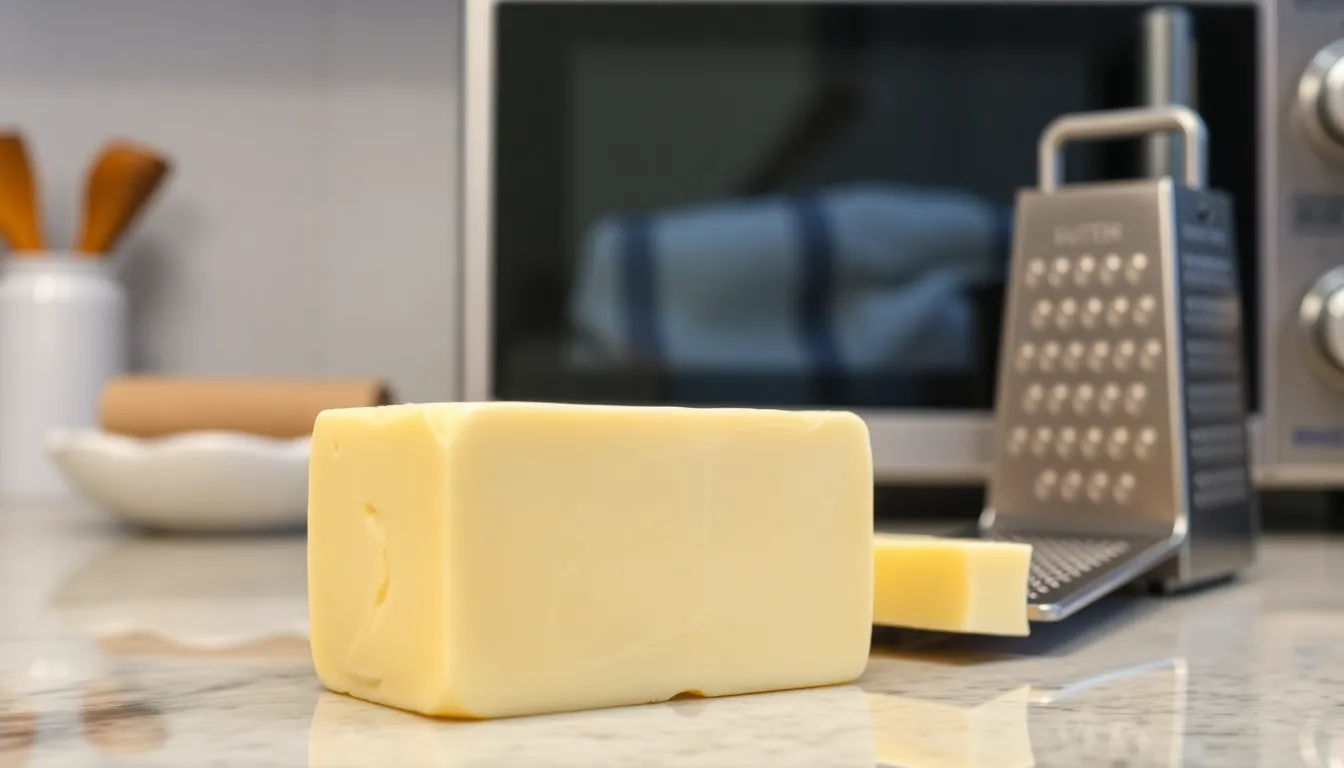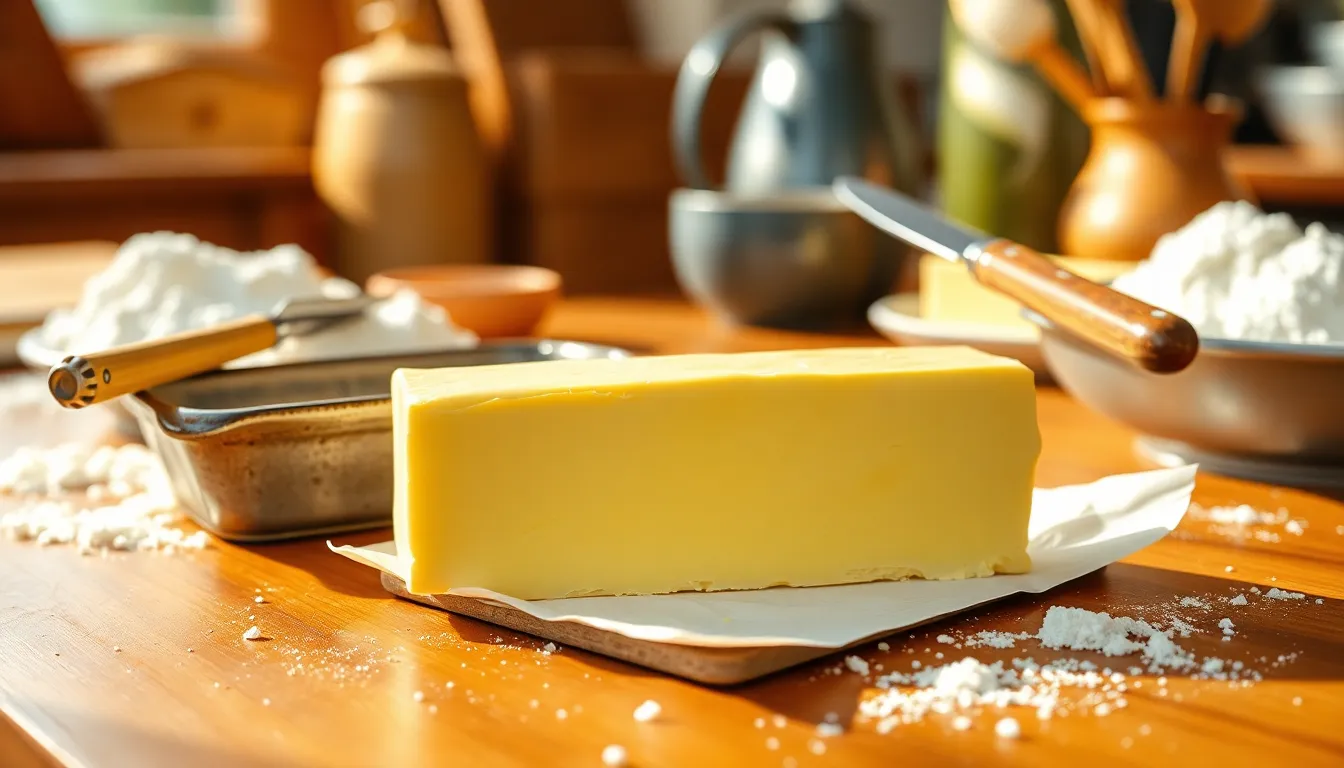Picture this: you’re ready to whip up a delicious batch of cookies, but there’s one problem—your butter is as hard as a rock. We’ve all been there, staring at the fridge, wondering how long it’s gonna take for that stubborn stick to transform into the creamy goodness we need. Softening butter isn’t just a culinary chore; it’s an art form that can make or break your baking game.
Table of Contents
ToggleUnderstanding Butter Softening
Softening butter involves various factors that can influence the time it takes to reach the desired consistency. Knowing how to manage this process helps achieve optimal results in baking.
The Science Behind Butter Softening
Butter consists primarily of fat, water, and milk solids. When left at room temperature, the solid fat begins to break down, turning from a solid state to a malleable one. This transformation occurs more quickly at warmer temperatures, making it essential to consider the baking environment. Altering the butter’s composition also affects how it softens, as higher fat content leads to a slower softening process, while lower fat varieties soften faster.
Factors Affecting Softening Time
Temperature plays a crucial role in how long butter takes to soften. Warmer environments expedite the softening process, while colder surroundings delay it. Cut butter into smaller pieces to reduce the time needed for softening. Another consideration is the type of butter used; unsalted butter typically softens more quickly than salted varieties. Additionally, the packaging of the butter impacts its exposure to air, which affects its ability to reach soft consistency efficiently.
Methods to Soften Butter


Softening butter can occur through several efficient methods. Each technique enhances the butter’s texture, making it ready for baking.
Room Temperature Method
Setting butter at room temperature offers a simple solution. Leave unsalted butter on the counter for 30 to 60 minutes, depending on the ambient temperature. Warmer environments reduce this time. Monitoring the butter ensures it doesn’t melt; aim for pliability, not liquid.
Microwave Method
Using a microwave provides a quick alternative to softening butter. Place cold butter in a microwave-safe dish and employ a low power setting. Heat for 10-second intervals, flipping the butter after each round. This careful approach prevents unintended melting and maintains an even consistency.
Grating or Shredding Method
Grating or shredding butter accelerates the softening process significantly. Use a grater or food processor to break the butter into smaller shreds. Smaller pieces melt uniformly and soften within minutes. This method excels in situations where time is limited, making it a favorite among busy bakers.
Best Practices for Softening Butter
Softening butter effectively contributes to smooth texture in baked goods. Several practices ensure that butter reaches the right consistency quickly and efficiently.
Storing Butter Properly
Storing butter correctly prevents it from hardening unnecessarily. Refrigeration keeps butter fresh, but it’s crucial to use an airtight container or wrap to minimize exposure to air. Keeping butter in a designated butter dish maintains its softness at room temperature. If planning to use butter within a week, it’s fine to leave it out, but for longer storage, the refrigerator is best. Freezing butter extends its shelf life significantly; simply cut it into manageable portions first. This method preserves flavor and texture while making future softening easier.
Guidelines for Ideal Softening Temperature
Achieving the right softening temperature ensures optimal use in recipes. Butter softens best at room temperature, ideally between 65°F to 70°F. At this temperature range, it remains pliable without melting. If environments are colder, softening may take longer than expected. Under warmer conditions, butter can soften significantly faster. When butter reaches a spreadable consistency, it blends seamlessly with other ingredients. Noticing the texture is essential; it should feel creamy but not runny for the best baking results.
Common Mistakes to Avoid
Softening butter can be tricky, and certain mistakes hinder this process. Avoiding these pitfalls ensures a smoother baking experience.
Overheating in the Microwave
Microwave settings often require careful attention. When butter overheats, melting occurs instead of softening. This results in a greasy texture unsuitable for baking. To prevent this, use low power settings or heat in short intervals. Checking every 10 seconds can help visualize progress without compromising quality. Gradually warming up the butter aids in maintaining its structure for optimal baking results.
Forgetting to Plan Ahead
Planning ahead significantly influences butter softening. Leaving butter out on the counter can save time if remembered. Ideally, setting it out 30 to 60 minutes before baking allows for proper softness. Chilling temperatures delay the softening process; thus, storing it too close to cold items in the refrigerator can contribute to hardness. Remembering to take butter out before beginning a recipe simplifies the preparation steps and enhances the overall baking outcome.



